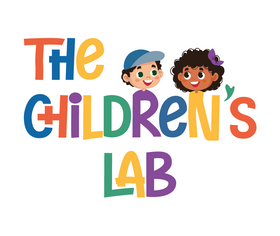
What Is a Sensory Tray? Benefits, Ideas & Tips for Toddlers
What Is a Sensory Tray? Benefits, Ideas & Tips for Toddlers
As parents, we’re always searching for activities that can help toddlers explore the world around them in a fun, safe, and educational way. One such magical tool is the sensory tray. If you’ve ever wondered what a sensory tray is, what are the benefits of a sensory tray, or why sensory play is essential for children, this guide will walk you through it all!
At The Children’s Lab, we believe sensory play isn’t just fun — it’s a building block for your child’s cognitive, emotional, and physical development. Let’s dive into the world of sensory trays and discover how they can make a big difference for your little ones.
What Is a Sensory Tray?
A sensory tray is exactly what it sounds like: a tray filled with materials and objects that stimulate a child’s senses — touch, sight, sound, smell, and sometimes even taste.
Using a large tray for sensory play, toddlers can dig, pour, squish, scoop, and explore different textures, colours, and scents. Sensory trays can be filled with anything safe and engaging — rice, sand, water beads, dried pasta, or even natural elements like leaves and flowers.
In simple terms, a sensory play tray is a hands-on playground for tiny explorers!
What Are the Benefits of a Sensory Tray?
So, what are the benefits of a sensory tray? Sensory play isn’t just messy fun — it’s critical to a toddler’s early development. Here's how:
1. Enhances Cognitive Growth
As children interact with different textures and objects, they begin to understand cause and effect, make predictions, and solve problems.
2. Builds Fine Motor Skills
Scooping, pouring, squeezing, and moulding materials on a sensory tray strengthens the small muscles in their hands and fingers — skills that are later essential for writing and self-care.
3. Promotes Language Development
Describing textures (soft, squishy, rough) and actions (pouring, digging, squeezing) helps toddlers build vocabulary naturally while they play.
4. Encourages Calmness and Focus
Sensory play can have a soothing effect on toddlers. A sensory tray offers an opportunity for independent, focused play that can help reduce anxiety and improve attention spans.
5. Sparks Creativity and Imagination
There’s no "right way" to play with a sensory tray. Children invent their own games and stories, using objects and textures as props for their imaginative worlds.
This is why experts strongly answer the question why is sensory good for kids — it’s a holistic workout for their developing brains and bodies.
Sensory Tray Ideas for Toddlers
Looking for some exciting sensory tray ideas for toddlers? Here are some easy and creative setups:
1. Rainbow Rice Tray
Dye rice in different colors using food coloring, spread it across a large tray for sensory play, and let your child mix, pour, and scoop.
2. Nature Discovery Tray
Collect leaves, sticks, flowers, and pebbles from the park. Add a magnifying glass for little explorers to get up close!
3. Water Play Tray
Fill a sensory play tray with water, cups, and floating toys. Splashing, pouring, and transferring water helps build hand-eye coordination.
4. Mini Construction Site
Fill a tray with kinetic sand or dry beans, add small toy trucks and diggers — and you’ve got a construction zone ready to go!
5. Farm Animal Adventure
Use shredded paper as "hay," add some mini farm animal figures, and create a storytelling tray.
6. Food-Based Sensory Tray
Cooked pasta, cereal, or even edible slime can be perfect for taste-safe sensory play for younger toddlers. Always supervise food-based trays to avoid overeating!
Using a large tray for sensory play ensures everything stays somewhat contained, and cleanup is much easier!
Tips for Sensory Play Success
To make the most of your toddler’s sensory play tray experience, keep these simple tips in mind:
-
Use a large tray with raised edges to prevent spills.
-
Choose age-appropriate materials: Avoid tiny items for toddlers who still mouth objects.
-
Set up a play zone: Use a mat under the tray or take it outdoors for easier cleanup.
-
Supervise when needed: Especially with edible or small parts.
-
Rotate themes weekly: Keep the excitement alive with new textures and stories.
-
Let them lead: Don’t instruct — observe. Toddlers learn best when they explore freely.
Remember, messy play is meaningful play. A little scattered rice or spilled water is a small price for big developmental gains!
Why Sensory Play is So Important for Indian Toddlers
In a bustling, noisy, and busy world like ours, giving toddlers space for calm, tactile exploration is essential. Sensory trays allow them to:
-
Discover textures they may not encounter daily.
-
Develop patience and concentration.
-
Connect with natural materials and traditional elements like rangoli powders, flowers, or spices.
-
Build social skills when shared with siblings or friends.
By offering sensory tray ideas for toddlers rooted in cultural elements, Indian parents can blend tradition with modern developmental play beautifully.
Conclusion
Now that you know what a sensory tray, what are the benefits of a sensory tray, and why sensory is good for kids, it’s time to introduce this magical tool into your toddler’s routine.
From rainbow rice to water play to nature-themed adventures, a sensory play tray offers limitless opportunities for growth, joy, and learning. Plus, using a large tray for sensory play ensures that the fun stays organized (well, mostly!).
At The Children’s Lab, we encourage every parent to embrace messy, meaningful play — because behind every tiny hand squishing pasta or pouring rice is a brilliant mind growing stronger every day.
Ready, set, squish, pour, and play!
